The Yellowstone supervolcano is the ultimate eruption waiting to happen
Science
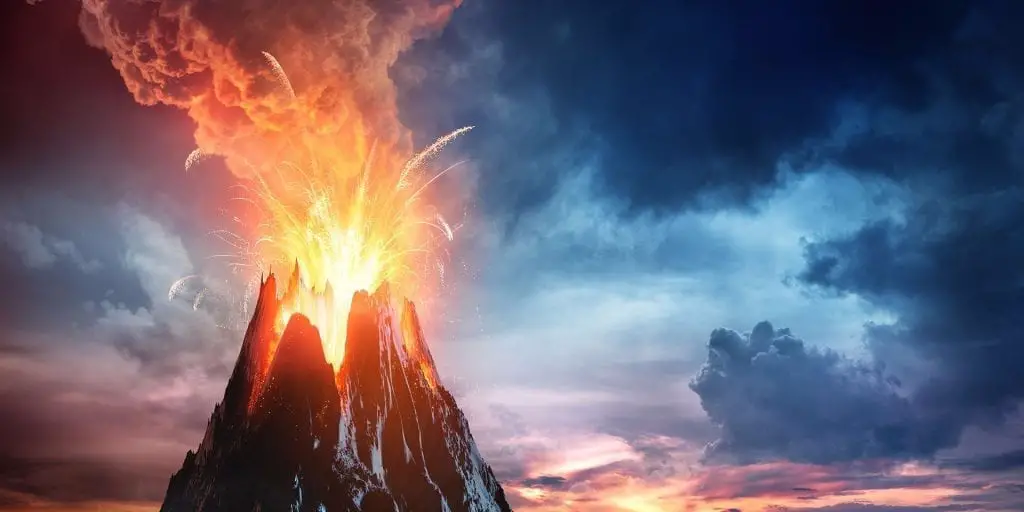
1. The anatomy of a volcano
Business Insider
Volcanoes are cool. But they’re also bad. While many of us don’t live with the fear that they may ruin our livelihoods, other of us do. But beyond these few small volcanoes that threaten us, there are others that are so massive—so worthy of awe—that they threaten all of us. The Yellowstone supervolcano is one of these. Among the many troubling facts about this volcano are that it is ready to blow. Every 650,000 years or so, the volcano blows its lid. Now it’s due for another. So let’s see what would happen when this volcano loses its lid.
To understand the peril imposed on us by the Yellowstone supervolcano, we must understand what volcanoes actually are. Essentially, a volcano is a area of earth where magma and pressure are building up. There is a magma chamber where molten rock lies beneath layers of the Earth’s crust.
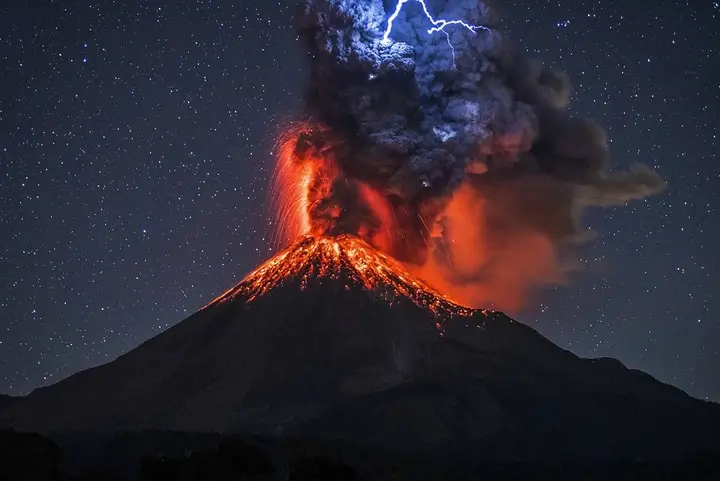
Metro
These volcanoes form when either two of the Earth’s tectonic plates separate or drive beneath one another, or when there’s a particularly hot spot beneath the Earth’s crust. If one plate gets pressed beneath another, for instance, the rock that gets driven deeper will melt from heat and pressure. This will cause the resulting magma to build and rise to the surface.
2. Supervolcano
A supervolcano is a certain type of volcano—a super type. And why is it super? Because it will, when it erupts, emit a far more powerful explosion than your boring old volcano. The Yellowstone supervolcano is one of this terrible caliber.
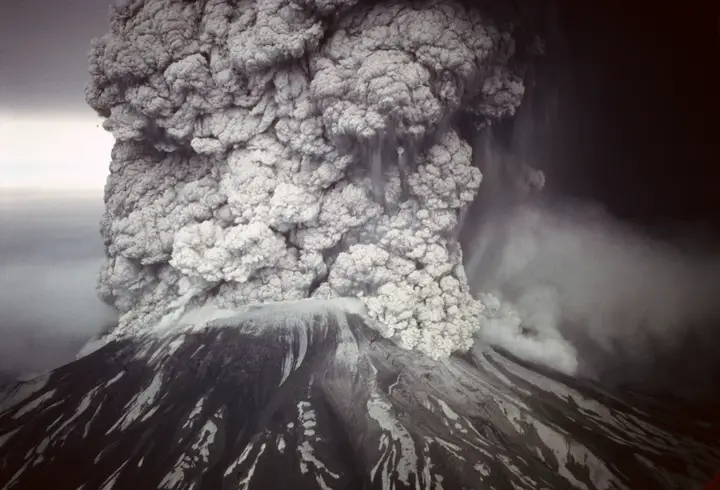
Adventure Journal
To be considered a supervolcano, the entity has to have had a history of massive explosions. These have to rank high on what’s called the Volcanic Explosivity Index. This index measures the caliber of each volcano in relation to others. Supervolcanoes rank heavy on the more explosive side of this index, ejecting enough ash, magma, and rock to put the Earth into existential crises.
3. Volcanic Explosivity Index
The VEI ranges in scale from 0 to 8. Volcanoes at the 0 end are unexciting. For the most part, they don’t show any signs of throwing the world into death and doom anytime soon. In essence, they don’t have enough pressure built up, aren’t made of the appropriate composite materials, and are all around just lame and boring.
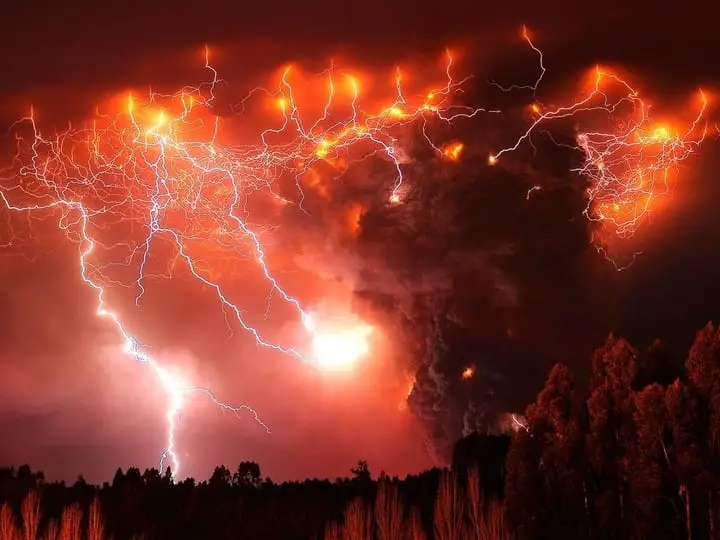
ScienceBlogs
Volcanoes with a ranking of 8 are the opposite. When these explode, they can emit over 1,000 cubic kilometers (that is, a chunk of material over 620 miles wide and deep) in volcanic goodness. That’s a lot. What’s troubling about Yellowstone, as you should know, is that it has one of these explosions every 640,000 years or so. It’s overdue for another.
4. Huckleberry Ridge
Yellowstone has had two notable eruptions in the past few million years. The first of these—which ranked an indomitable 8 on the VEI—was Huckleberry Ridge. While it may have the least intimidating name imaginable, this eruption blew roughly 11,000 football fields of material into the air. This all happened around 2.1 million years ago.
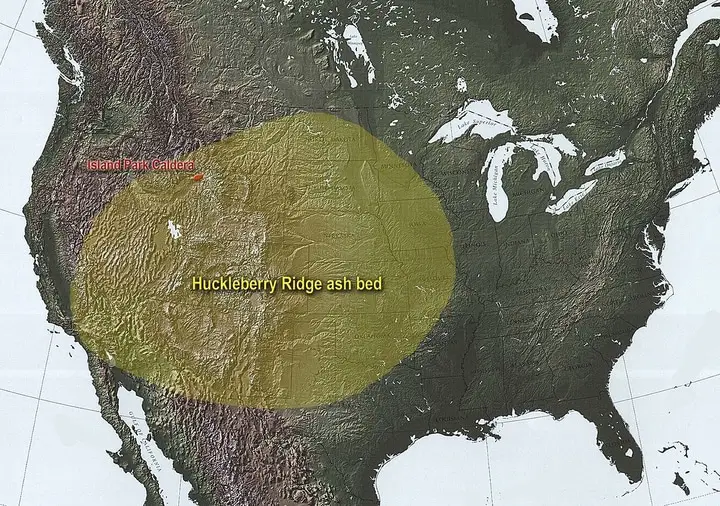
Wikipedia
The debris of this eruption can be found all the way from California to the sinuous contours of the Mississippi River. The result is responsible for forming Island Park in Idaho and Wyoming. Needless to say, the explosion was quite big, spreading enough ash into the atmosphere to encircle the entire Earth.
5. Lava Creek
Another of Yellowstone’s frightful explosions happened around 630,000 years ago. This eruption was similarly an 8 on the VEI and again spewed enough ash into the air to cover the entire world. The amount of ash from this explosion, however, was enough to plunge the Earth into what scientists call a volcanic winter.
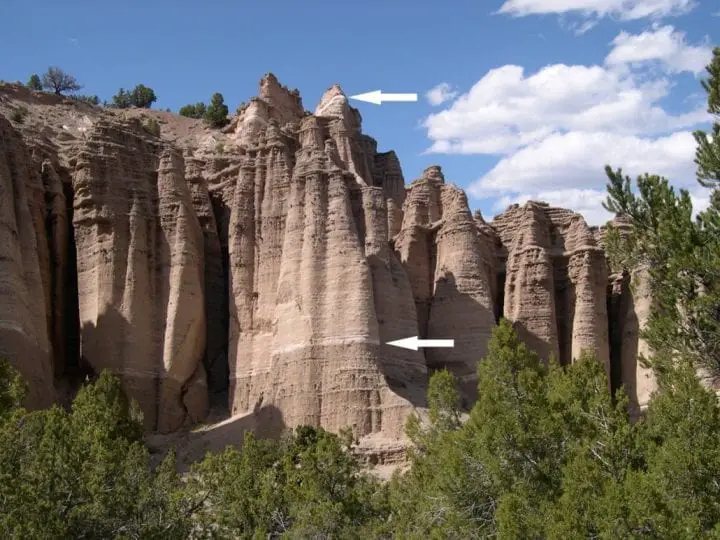
Utah Geological Survey
In essence, there was so much sediment in the environment that the Sun’s rays couldn’t penetrate to the layers beneath. The amount of vegetation and other life that can die in the wake of such a disaster is untold. Ultimately, the result of this eruption—other than the tumult—was the park’s largest caldera (a hole left where the volcano exploded).
6. Pyroclastic flow
There are several ways through which volcanic explosions can ruin your day. And by that I mean wipe out you and everyone you know. One of the most salient of these is called pyroclastic flow. This pyroclastic flow is the thick smoke and sediment you see after a volcano explodes. It’s not something you want to hang around.
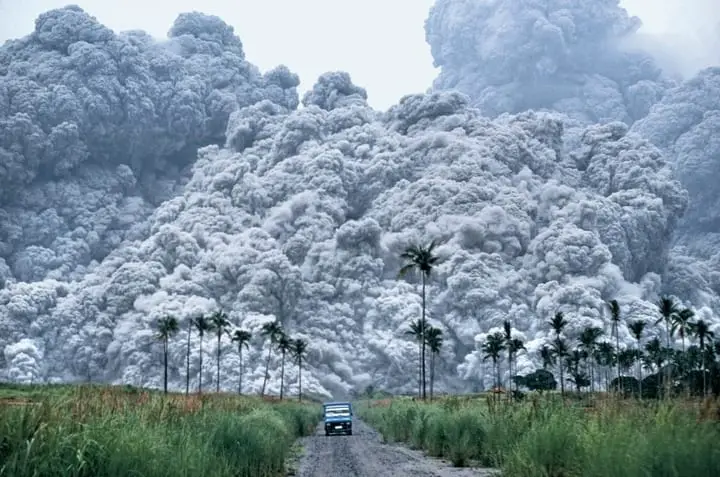
Newsweek
This smoke if full of all sorts of toxic nastiness, including microscopically sharp pieces of rock, temperatures exceeding 1,000 degrees Celsius, and boulders blown from the volcano’s peak. This flow will destroy pretty much everything in its path, with speeds that can exceed 700 kilometers (435 miles) per hour.
7. Volcanic ash
Another problem for those in the midst of a volcanic eruption is the volcanic ash. This stuff is bad for several reasons. First off, the particles it contains are essentially small shards of glass—but worse. Another problem is that this material can destroy the engines of cars and planes. The amount of damage the ash can do depends on the type of material it’s made of.
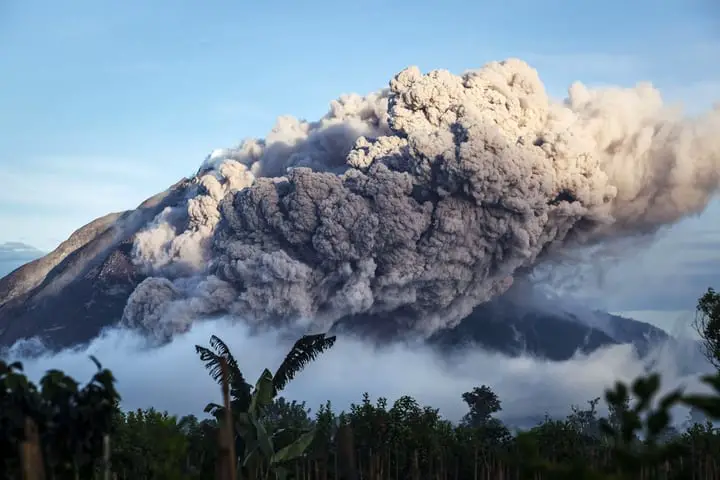
HuffPost
Typically, the more silica (a type of mineral) the ash contains, the worse it is. When sucked into the engine of a plane, for instance, the heat of the jet engine will exceed the melting point of the silica-based ash. This will cause it to melt and ruin the engine. If you’d like to remain airborne, you can see why this isn’t good.
8. Goodbye lungs
Another problem from the volcanic ash is what it can do to our lungs. Since the ash is both microscopically sharp and macroscopically abrasive, it can cause numerous problems in our respiratory tract. One of these problems is called silicosis—a disease similar to what miner’s call black lung.
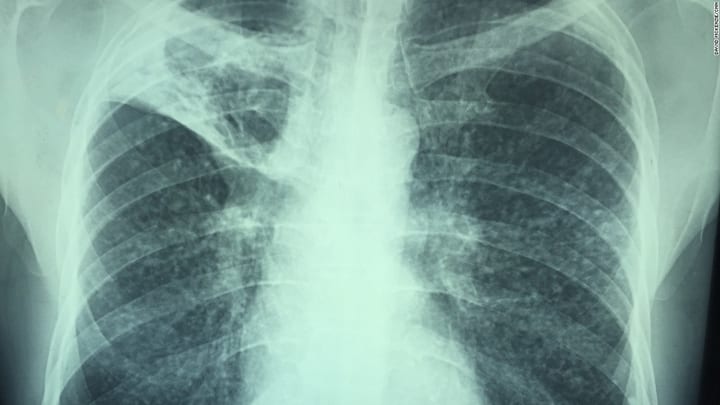
CNN
Silicosis happens when the silica from the ash inhabits the nodes of our lungs. What this does is create a unique breed of inflammation that leads to the formation of some ugly black fleshy growths. And, if you’ve ever seen those terrible ads advertising the perils of smoking cigarettes, you’ll know that black fleshy growths in the lungs aren’t good.
9. Lahar
Another common consequence of the volcanic explosion is the lahar. These lahars consist of snowmelt and other debris that aggregate en masse after the volcano erupts. In essence, the heat from the volcano melts all that surrounds it, causing it to flow down the slope of the volcano at formidable speeds.
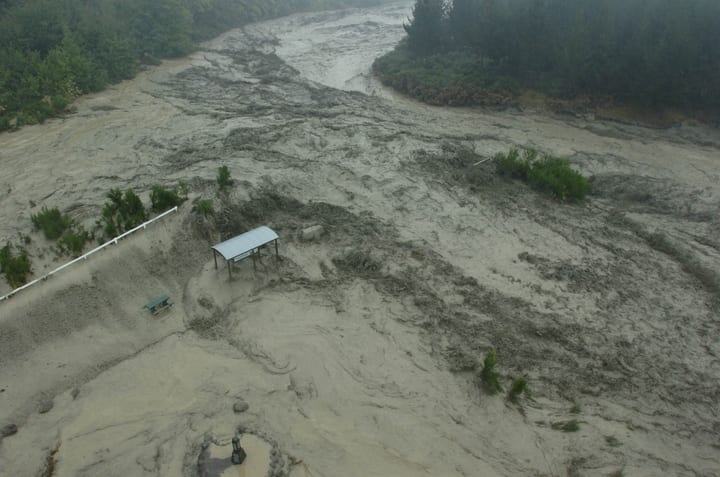
CREDIBLE
The power of lahars can be great enough to rip trees from their roots, rocks from their comfy rock homes, and people from their nice warm beds. To repeat: if you see a lahar making its way toward you and your nice new four-door Chevy, I wouldn’t recommend trying to get a little mud on the tires. This is a wave best not to surf.
10. Hawaiian eruption
But this terror doesn’t fall from all volcanic eruptions. There are, in other words, different types with different levels of associated destruction. And, as you’ll see, the Yellowstone volcano is one of those on the more terrible end of the continuum. But first, we’ll start with the most innocuous—the Hawaiian eruption.
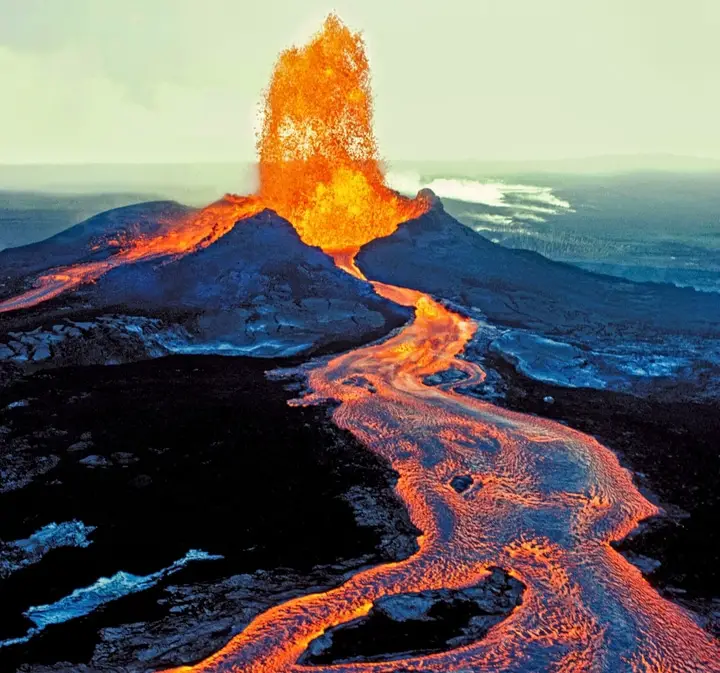
The Celestial Convergence
Hawaiian eruptions are mostly effusive, which means that their magma isn’t made of sticky materials. Because the magma isn’t sticky, it can’t build up enough pressure in the volcano to explode with the same ferocity of those like Yellowstone. In essence, you need the stickiness to prevent the magma from just oozing out of the cracks and crevices of the rock.
11. Strombolian eruption
Strombolian explosions are slightly more intense than Hawaiian eruptions, but still not all that exciting. They do, however, emit an incandescent and bright type of magma when they erupt, so that’s cool. These volcanoes get their name from Mount Stromboli, an active volcano in Sicily, Italy. When they erupt, they shoot their projectiles ten to a couple hundred feet into the air.
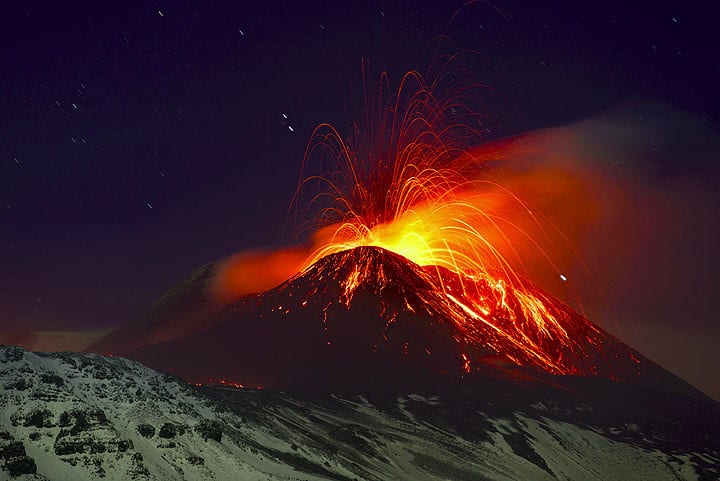
Flickr
Strombolian eruptions are only rated a two or three on the Volcanic Explosivity Index. This means that they’re not the most explosive. So if you’re in the wake of one of these bad boys, you needn’t worry yourself too much. It’s probably just not a good idea to try and hike up one of these.
12. Vulcanian eruption
These eruptions were named after the island Vulcano off the Tyrrhenian Sea in Sicily are uniquely characterized by the dense plum of ash that gets ejected from the top of them once they explode. It’s a lot of smoke, but not a lot of volcanic danger. The problem with these is mostly from the volcanic ash. Explosions like those from Yellowstone are much worse.
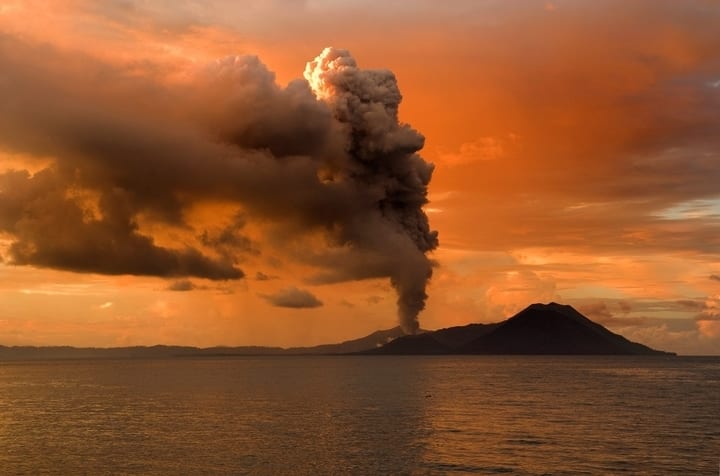
HeritageDaily
When its eruption was first documented, the Roman’s thought it was the vent opening for the smith god Vulcan. While this is undoubtedly not the case, the explosion of the volcano was a sight to see, inducing historians of the time to scrawl notes vigorously on their parchment.
13. Plinian eruption
Plinian eruptions are the most severe on the list, gaining a ranking of 7 or 8 on the Volcanic Explosivity Index. While there are also distinctions between Plinian and ultra-Plinian, both are the most severe you can get—with ultra-Plinian equaling the supervolcano that makes up Yellowstone.
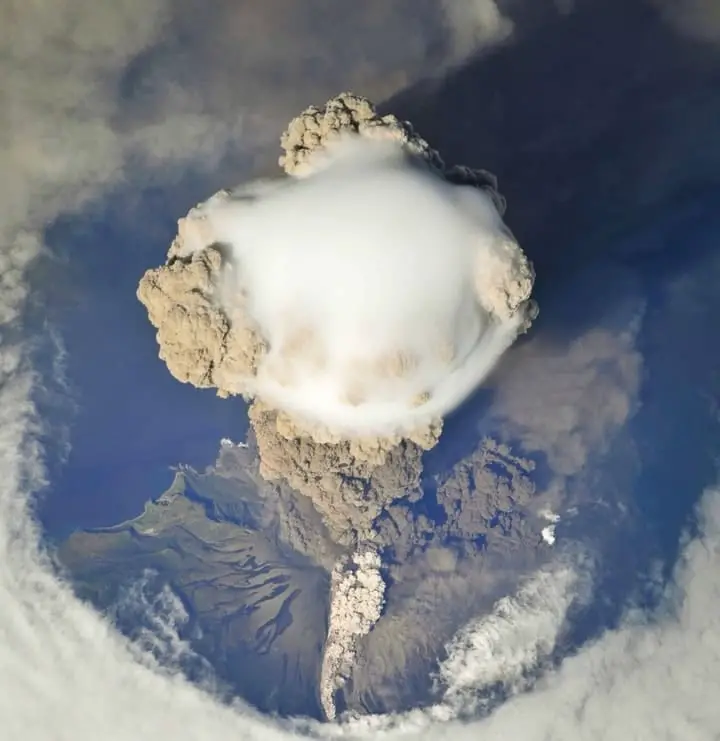
Phys.org
Plinian explosions are the most severe, imposing mass amounts of devastation on all nearby—and far-off—land. These explosions are thousands of times more deadly and destructive than those like Mount St. Helens and Krakatoa—some of the more famous eruptions of our recent past. And this is where we enter the destruction of the possible Yellowstone supervolcano.
14. Mount St. Helens
Yellowstone is considered a supervolcano that will erupt in an ultra-Plinian fashion. To get a full understanding of just how devastating this explosion will be, let’s take a few examples. We’ll start with Mount St. Helens, the volcano infamous for causing billions of dollars in damage to the nearby Washingtonians.
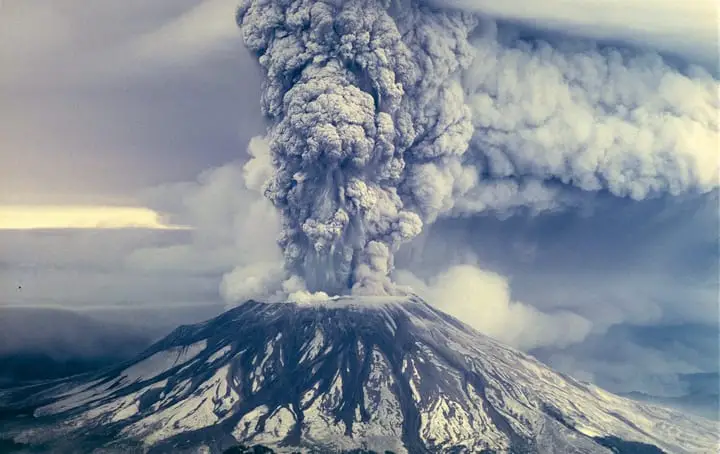
Strange Sounds
Erupting in 1980, this eruption blew down all trees within a 370 mile radius. It also covered the entire Earth in a film of ash and was considered the most detrimental and costly eruption in US history. Mount St. Helens is was only considered a 4 or 5 on the Volcanic Explosivity Index, though. The impending explosion of Yellowstone is predicted to be 10,000 times more extreme.
15. Krakatoa
Krakatoa is another volcano that can give us a clue about how detrimental a Yellowstone-style explosion will be. Krakatoa, like Mount St. Helens, wasn’t the highest on the Volcanic Explosivity Index. It was only considered around a 6. However, even at a 6 its blast could be heard from 3,000 miles away and ruptured the eardrums of people within 40 miles.
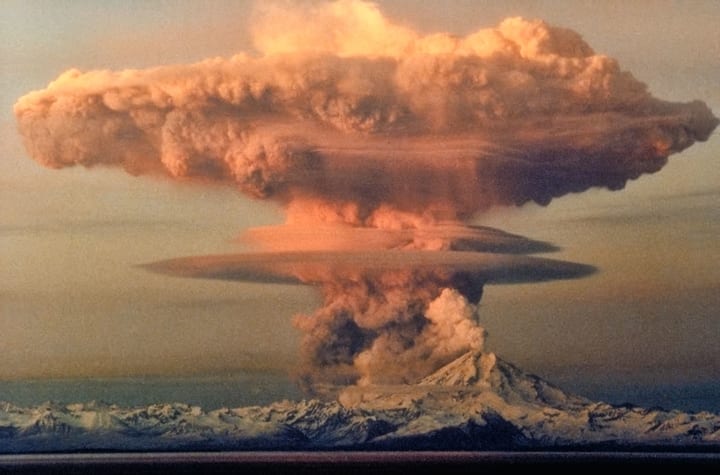
Planet Deadly
Krakatoa’s eruption had an explosion considered somewhere around four times the most powerful nuclear bomb. And because of the density of people located around the volcano (which is in Indonesia), anywhere from 35,000 to 120,000 people died. But again, the Yellowstone supervolcano would erupt with 1,000 times the power.
16. Hotspots
Yellowstone’s fright-inducing volcano comes from what geologists call a hotspot. Hotspots are essentially just places beneath the Earth’s crust that are particularly hot. So hot, in fact, that they melt all the rock above to form a magma chamber and the other geological features of a volcano.

tropical cyclocross
As tectonic plates move around the hotspot, the location of the growing volcano will move. This moving is what’s given us the Yellowstone supervolcano. Beyond this currently dormant volcano, though, is that the hotspot is responsible for Yellowstone’s famous geysers. Ultimately, many of the attractions of Yellowstone are the result of the particularly hot spot beneath the Earth’s surface.
17. Tectonic plates
In case you were unaware, the crust of the Earth is only a thin slice of what actually exists on this sphere called Earth. This thin slice is made up of tectonic plates, which rest atop the rest of the Earth underneath. The crust that rises above sea level (i.e., the continents) varies around 25 miles thick. The oceanic plates are only around 3 to 5 miles thick.
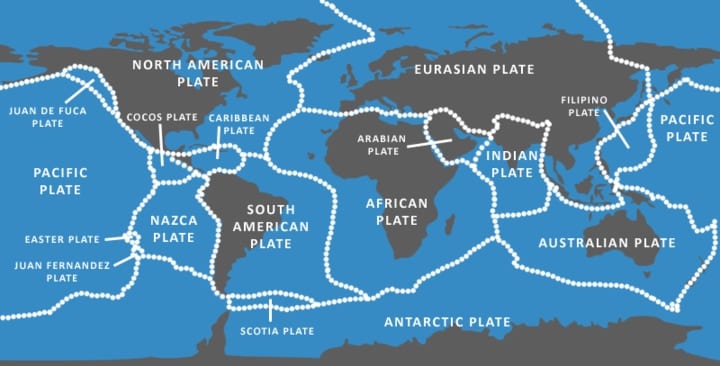
The 7 Continents of the World
These tectonic plates are responsible for creating most of the volcanic activity we see on planet Earth. Mostly, these plates collide, submerge, and create volcanoes, earthquakes, and mountain ranges in response. To get a better grip on how this works, let’s take a deeper look at what goes on beneath the Earth’s crust.
18. The mantle
The mantle of the Earth flows right beneath the crust. Unlike the crust, however, the mantle is pressed from all sides to a point that makes it hotter—so hot, in fact, that it remains molten and liquid. This molten magma (called lava when it’s beneath the surface) is responsible for the formation of every volcano that exists.
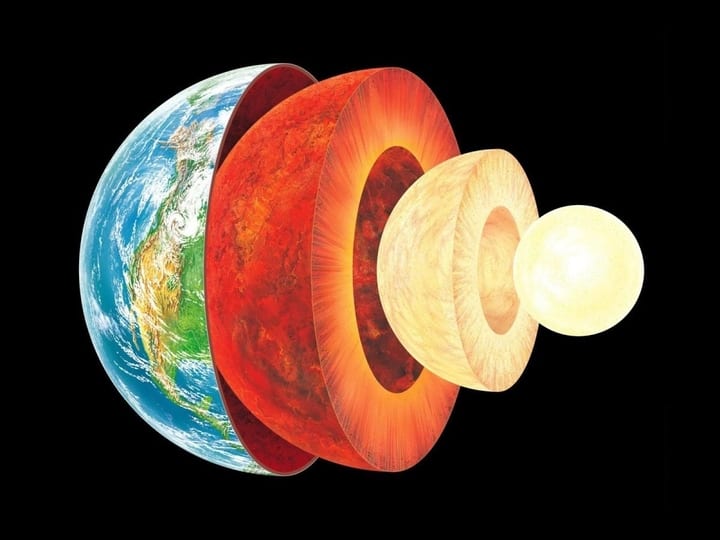
Forbes
Scientists believe the mantle to be around 1,800 miles deep. From here, the mantle turns into the outer core, which is about 1,400 miles thick and composed of nickel and iron. Still, however, it is liquid from the heat and pressure of nearby rock. Beneath this is the inner core, which is a solid nickel and iron.
19. Italian volcanoes
There are some places on Earth that, because of their specific relationship with the tectonic plates, are more prone to the development of volcanoes than others. Italy is one such place. This is because it sits on the border between the African and Eurasian plates, creating much volcanic activity.
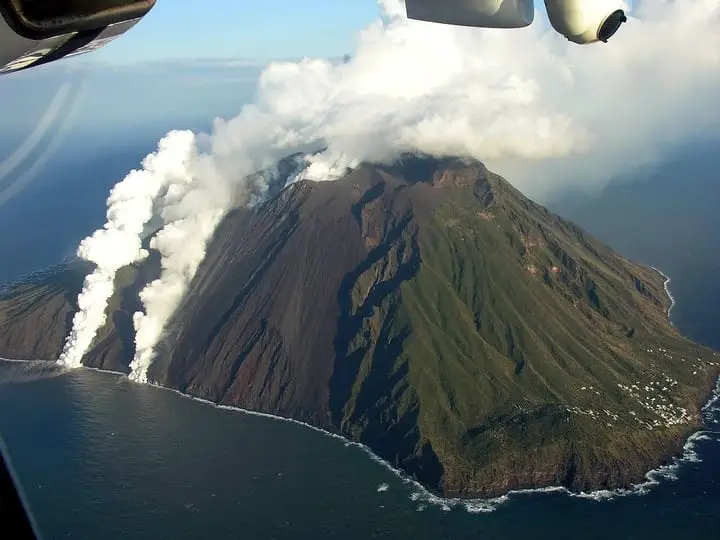
PlaceRating
This activity is the result of the African plate getting suppressed beneath the Eurasian plate. This has created not only the Apennine Mountains, but over a dozen volcanoes in or around Italy. The Stromboli volcano mentioned early, for instance, as well as Mount Etna and Mount Vesuvius are some of these volcanoes.
20. Ring of Fire
Another particularly treacherous volcanic spot of interest is the so-called Ring of Fire. This giant ring expands up and down the west coast of the Americas and continues over to the east coast of Russia. Then, it continues down to China and New Zealand. The circle closes with volcanic activity lining the Antarctic plate.
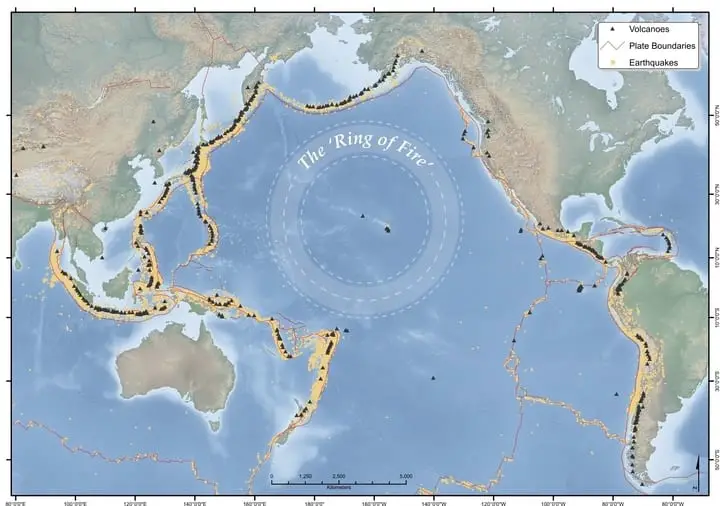
Earth Observatory
Like the volcanoes of Italy, this Ring of Fire is created by the tectonic activity that rumbles beneath—i.e., where the plates slowly collide into each other. The ring is such an active place that it’s responsible for nearly 90 percent of the Earth’s earthquakes and roughly 70 percent of Earth’s volcanoes.
21. The eastern ring
Of the Ring of Fire, some parts are more volcanically active than others. The west coast of the United States, for instance, which is the eastern part of the ring, has several of the most highly ranked volcanoes on Earth. Of the 18 considered especially dangerous, 11 of them exist in Washington, Oregon, and California.
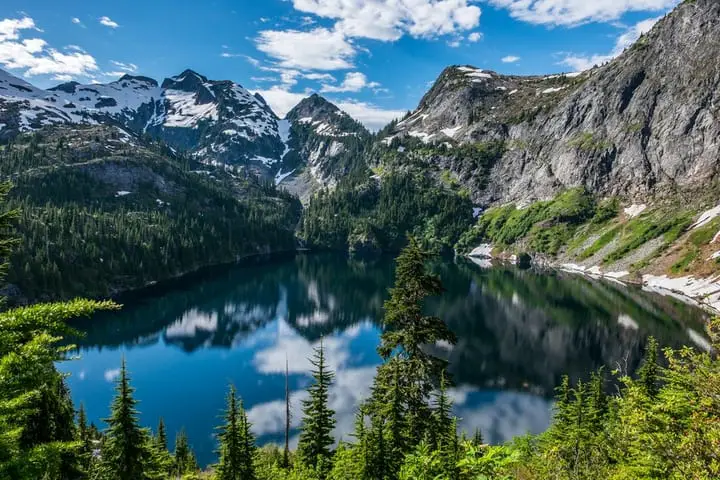
The Greatest American Roadtrip
Many of the others exist farther north in Alaska. It’s not clear why these are the most active of all. Perhaps it’s because the plates beneath them have been submerging for longer, or maybe because the rock that overlies them is composed of a different composite material. Whatever it is, these volcanoes are more extreme than those far east.
22. Alaska
Many of the other dangerous volcanoes are located in Alaska. While these have the most potential for catastrophic explosion, however, the population densities in Alaska are, let’s just say, smaller. And because of this, the damage they can actually do is minimal.
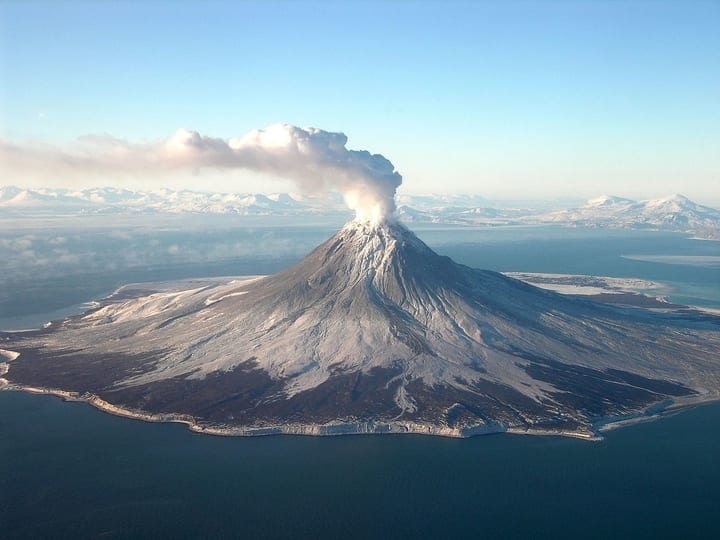
Wikimedia
Volcanoes with less potential for a high ranking on the Volcanic Explosivity Index that are near larger populations, then, are literally more dangerous. Simply put, this is because they can actually reach people with their explosive contents. Volcanoes in Alaska don’t bear the same danger. And so, while they may be technically more capable of explosive eruptions, they don’t really have a chance of making it to us.
23. The San Andreas Fault
The San Andreas Fault is one of the most active places along the Ring of Fire. It cuts through the North American Plate, stretching around 800 miles. This boundary is called a transform boundary, which means that instead of getting pressed above or beneath another, it just slides past. This sliding causes pressure to build, creating many, many earthquakes.
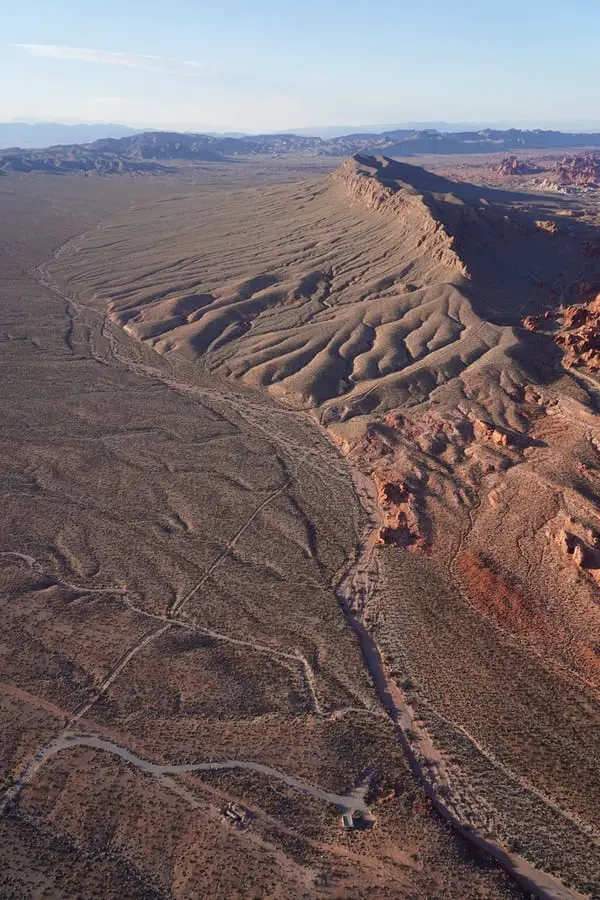
hiveminer
The boundary is about 10 miles deep. It’s responsible for an outrageous action movie starring Dwayne “The Rock” Johnson, but it’s also responsible for one of the most notorious earthquakes in United States’ history—the San Francisco Earthquake in 1906. It killed roughly 3,000 people and was one of the costliest quakes of all time.
24. The west ring
While the West Coast of the Americas holds many of the more severe volcanoes, the west coast of the ring holds more of the known active volcanoes. There’s a greater number, in other words, of volcanoes that will actually explode. The Kamchatka Peninsula in Russian, for instance, holds many, as does the islands of Japan and New Zealand.
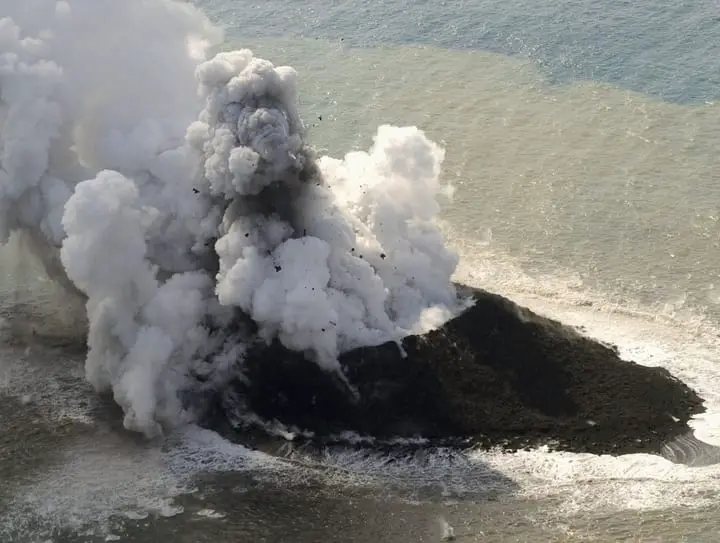
International Business Times
On this side, for instance, there is a lot of subduction—the submersion of one plate beneath another. This subduction is responsible for not only Mount Fuji and Unzen volcano, but also the Taupo Volcanic Zone in New Zealand. Both of these spots are active locations of research for geologists and their ilk.
25. Calderas
To understand how massive the explosion of supervolcanoes can be (as if you haven’t learned already), we can look at some of the results of explosion’s past. Often times, these explosions leave calderas—giant holes left in the ground from the volcano’s eruption.
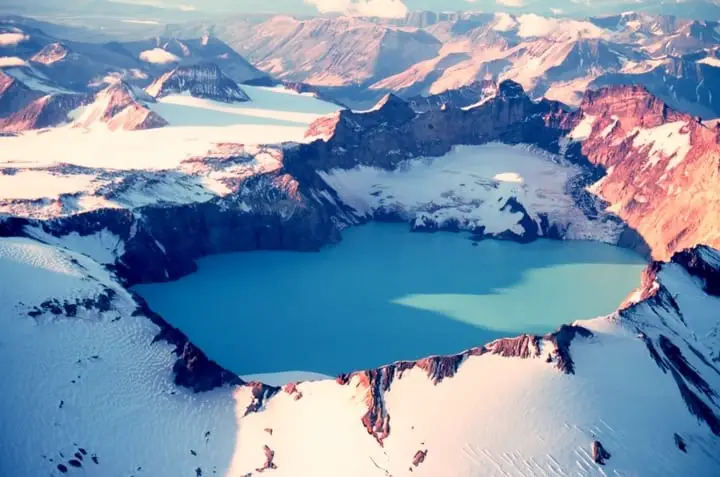
VolcanoCafe
There are several of these calderas on planet Earth, hinting at the explosions that blasted them into existence. Some of these have gone on to form the largest lakes we know of. Others have gone on to form less substantial—yet still impressive—lakes and islands. Either way, these calderas tell us the potential a given volcano has. This will tell us something about Yellowstone.
26. Crater Lake
Crater Lake is the deepest lake in the United States. And how was it formed, you ask? Well, by a supervolcano, duh. Crater Lake was formed when Mount Mazama, a once prominent volcano in Oregon, erupted around 7,700 years ago. After it erupted, it caved into this massive caldera, whereupon it was eventually filled with water.
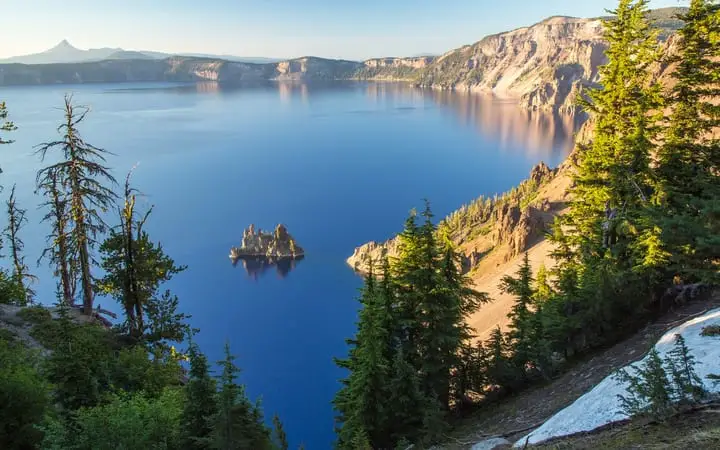
InterfaceLIFT
The depth of this caldera testifies to the sheer volume of mass that some of these volcanoes eject. And how deep is crater lake? It registers at a staggering depth of around 4,000 feet. That’s pretty deep. By comparison, Lake Tahoe is only 1,644 feet. Lake Chelan is about 1,486. The depth of this lake is something to be admired.
27. Santorini, Greece
Santorini, Greece is another caldera. This caldera, though, is mostly submerged beneath water. It came from the Mount Thera eruption in around 1,500 AD. The volcano was retrospectively rated a 6 or 7 on the VEI scale, so it was quite the doozy. You wouldn’t, in other words, have wanted one of these sweet summer homes around that time.
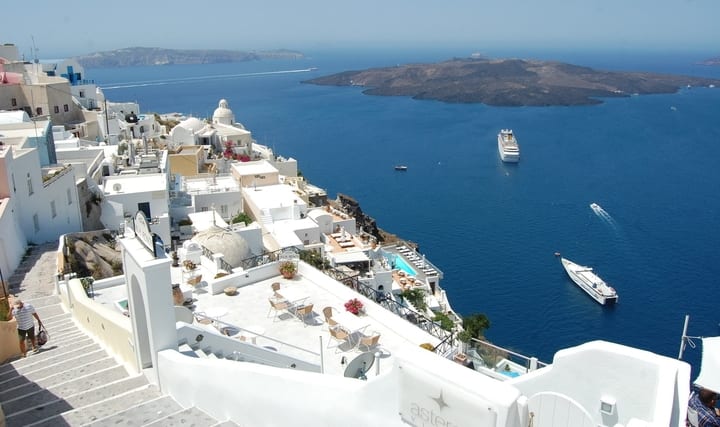
DeviantArt
In the case of Santorini, though, the caldera isn’t the most visible. You can tell, however, that the islands of Santorini form a non-distinct circle. This is because the caldera has been consumed by the Aegean sea. At the time of this explosion, the volcano is believed to have killed off the remainder of the Minoan civilization.
28. Mount Pinatubo
Mount Pinatubo is an active volcano in the Zambales mountains, which is located in the Philippians. Recently, it exploded its contents into the nearby towns and cities of the Philippians. All this happened in June 15, 1991. Another terrible feature of this eruption was that it shot a bunch of carbon dioxide into the atmosphere.
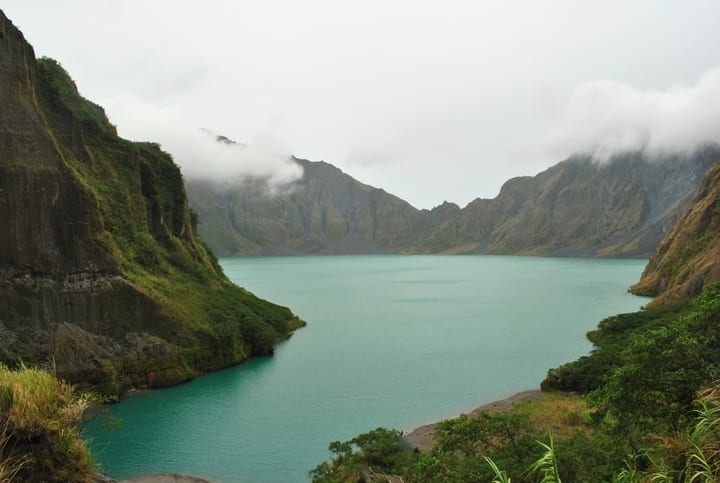
Backpacking Pilipinas
Carbon dioxide, in case you didn’t know, is bad. It prevents heat from leaving the atmosphere, slowly warming the planet. And a warm planet, despite the protestations of those who enjoy a good tan year-round, isn’t good. It melts glaciers, raises sea levels, and destroys pretty ecosystems.
29. Mount Toba
Mount Toba is the largest caldera we know of. It came from a supervolcano that erupted 77,000 years ago. The explosion of the volcano is hypothesized to have been so large that it plunged the entire Earth into a period of global winter. This period of cooling lasted for something like six to 10 years.
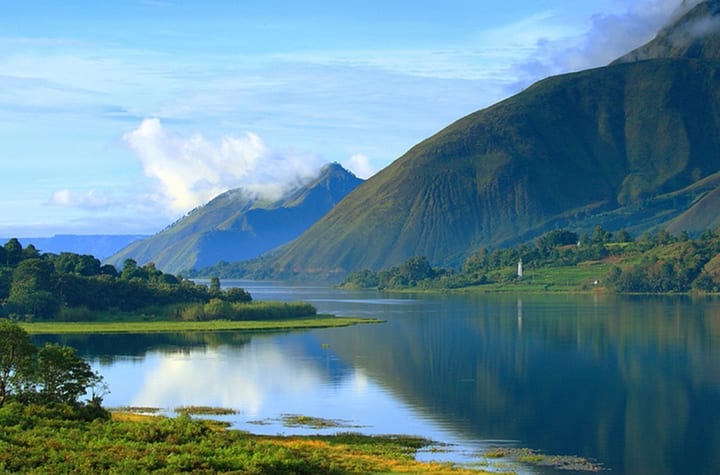
Xplorea
Mount Toba was an eruption in Sumatra, Indonesia. The cooling after the global winter is thought to have cooled the Earth for something like a 1,000 years. Such a drastic change in the Earth’s atmosphere is enough to change much of the flora and fauna—and change for the worst—that exist.
30. Conclusion
Yellowstone, then, which is due for another explosion, is set to blow with something far worse than Mount St. Helens and a little bit less than Mount Toba. What can we expect from this invariably catastrophic blast? A lot of pain and tumult; sound and fury. Okay, it’s hard to say what it will actually do, but the result will be impactful for those nearby.
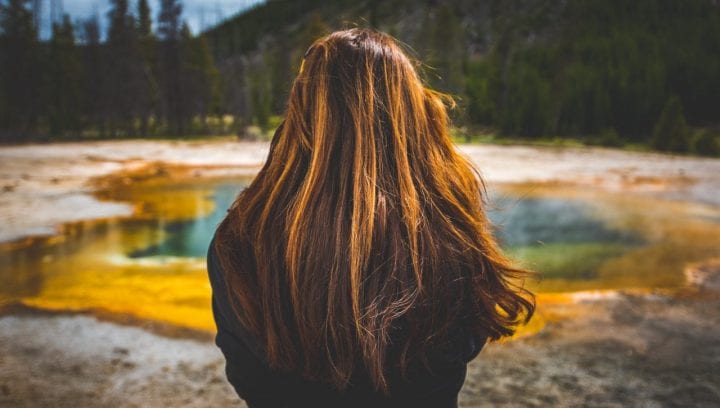
Fortune/Getty Images
Thankfully, scientists monitor Yellowstone for volcanic activity. So, if it were to blow anytime soon, we would know at least some time in advance. Another plus is that Yellowstone is located in an area that is relatively unpopulated—compared to, say Mount St. Helens. Anyways, you can consider yourselves safe. For now.